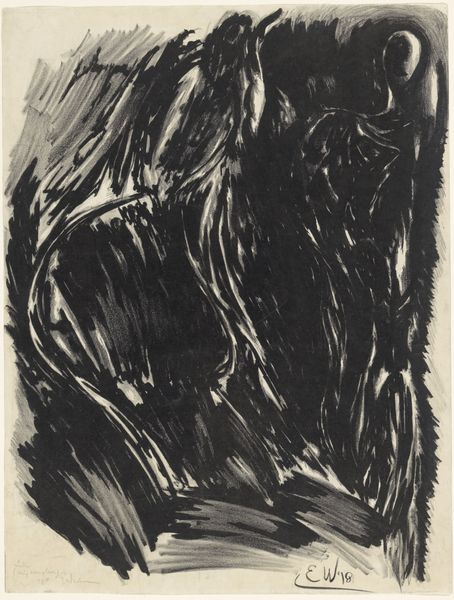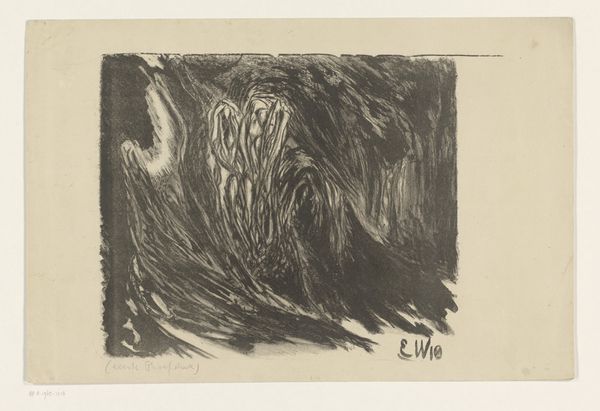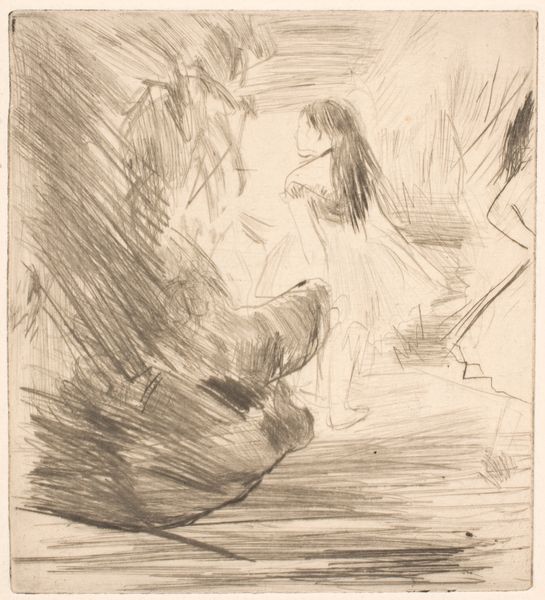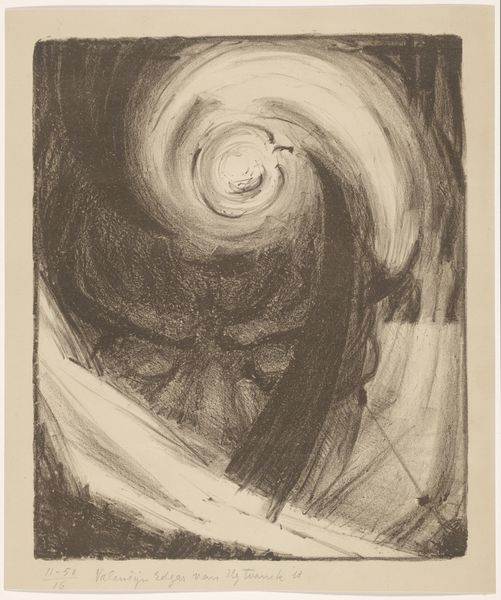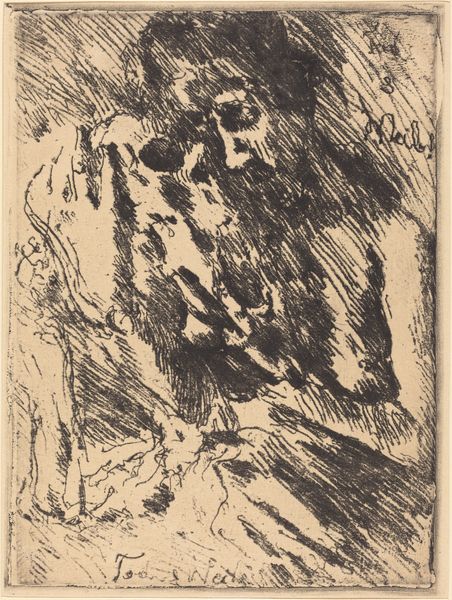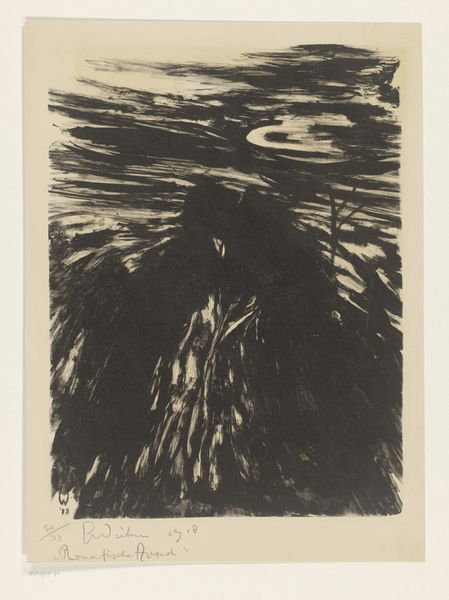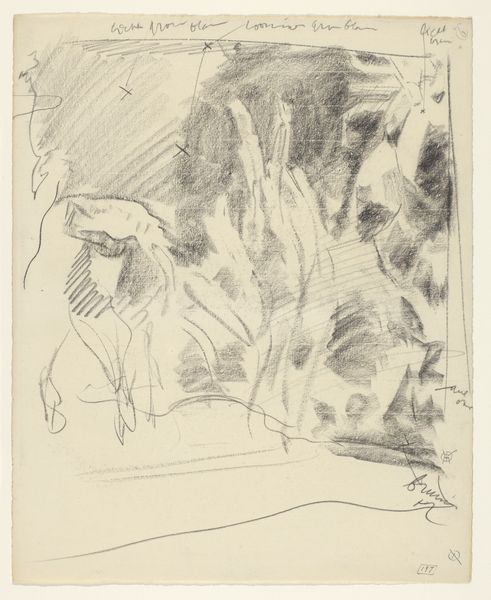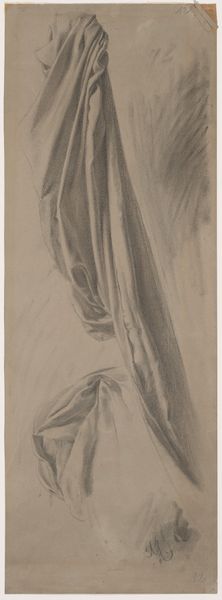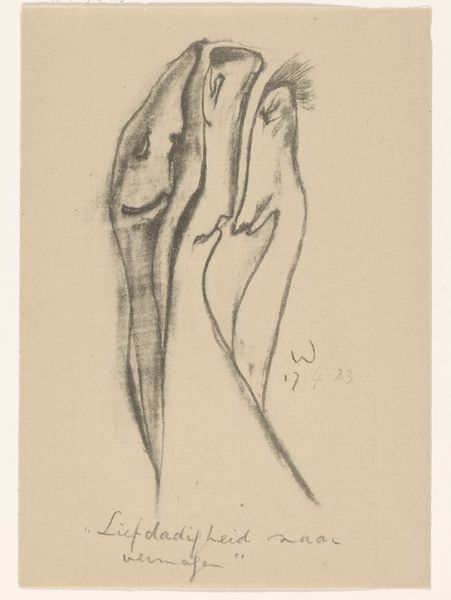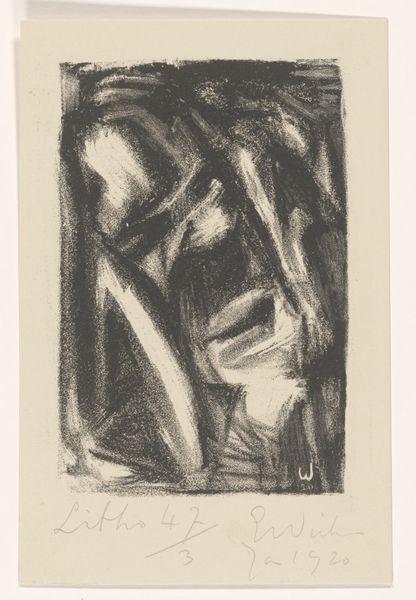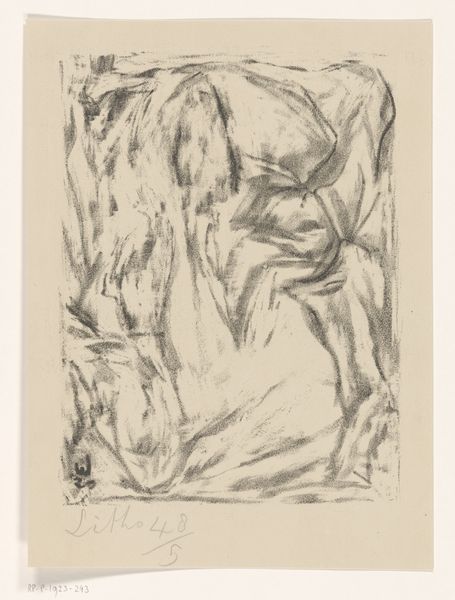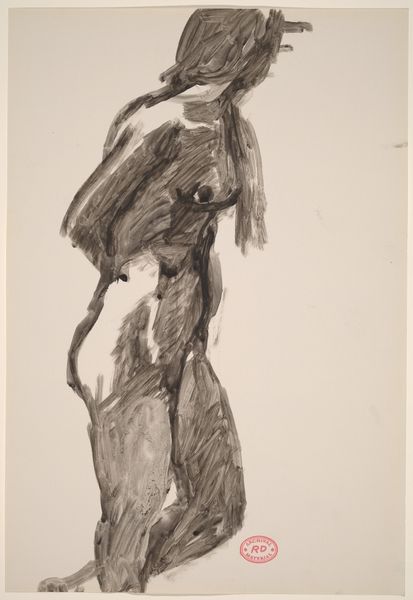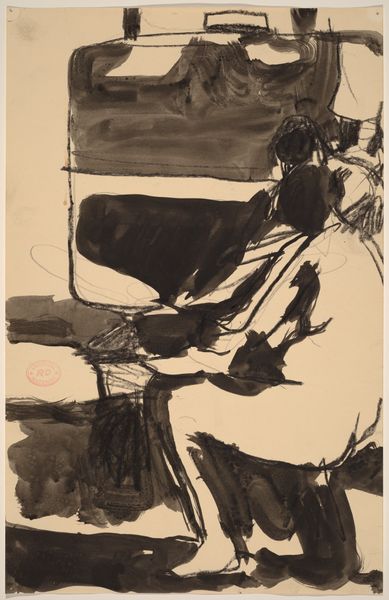
drawing, ink, pencil
#
drawing
#
ink drawing
#
etching
#
german-expressionism
#
ink
#
pencil drawing
#
pencil
#
expressionism
#
abstraction
Dimensions: height 345 mm, width 250 mm
Copyright: Rijks Museum: Open Domain
Editor: This is “De tragische kikker” or "The Tragic Frog," an ink and pencil drawing by Erich Wichmann, created in 1918. It’s… chaotic. There's a lot of movement implied with these sharp, swirling lines, and even though it's called 'tragic frog', it's hard to make out a discernible figure. How do you interpret this work, especially within its historical context? Curator: Well, consider the year: 1918. Europe was in the throes of the First World War. Expressionism, as a movement, was grappling with the trauma and anxieties of modern life. How might those socio-political realities shape Wichmann’s choice to depict, or rather, *abstract* a frog as tragic? Editor: I suppose the abstraction reflects the breakdown of order, maybe? So, is the frog a metaphor for something else entirely? Curator: Precisely. Think about the public role of art. Was this piece meant as a direct commentary on the war? Perhaps not literally. But Expressionists often used distortion and intense emotion to convey psychological states. Could the 'tragic frog' be a symbol of vulnerability, of the suffering inherent in existence, amplified by the war? Consider the German Expressionist focus on inner turmoil and the critique of societal norms. Editor: So it’s not really about frogs. More like, using this distorted, abstracted image to portray a widespread sense of hopelessness and the breakdown of societal structures that people were experiencing? Curator: Exactly. The title creates a dissonance. We expect a straightforward depiction, but instead, we get a swirling vortex of emotion. Wichmann’s ‘frog’ is thus imbued with the tragedy of a generation. Do you think the title itself contributes to this sense of unease and political statement? Editor: Absolutely. Without the title, it would be pure abstraction. The title forces you to confront the artist's perspective, making it a social and political piece instead of a mere visual exercise. Curator: It’s fascinating how context transforms our understanding of the artwork, isn’t it? Editor: Definitely. I hadn’t considered how strongly the war, or just the time period, shaped what he was trying to say through his art.
Comments
No comments
Be the first to comment and join the conversation on the ultimate creative platform.
